|
|
Post by nuuumannn on Mar 31, 2010 21:25:51 GMT 12
Hello, I thought I would re jig the images on this thread I took at Woodbourne when the Zero was in the country for 2010 WoW. The following is copied from elsewhere on this forum: A6M2-21 c/n 3869, recovered from Babo airfield, Irian Jaya, Indonesia in 1991, P&W R-1830 motor. Restored to airworthy in Russia as an A6M3-22, flying as N6582L, later N712Z since 28 April 1998, code X-133 Registered to Liberty Aero, Santa Monica, operated by Southern CA Wing CAF and flying from their base at Camarillo. A few images from different angles, which highlight the aircraft's svelte lines 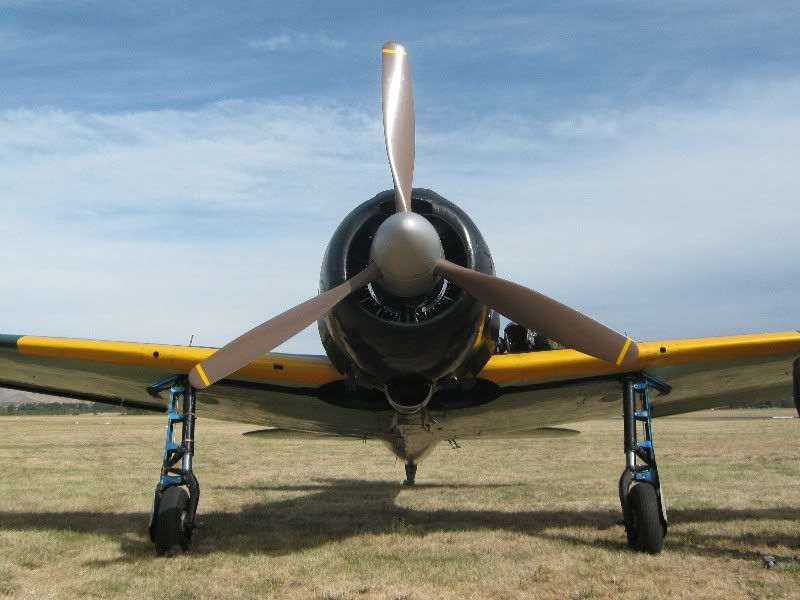 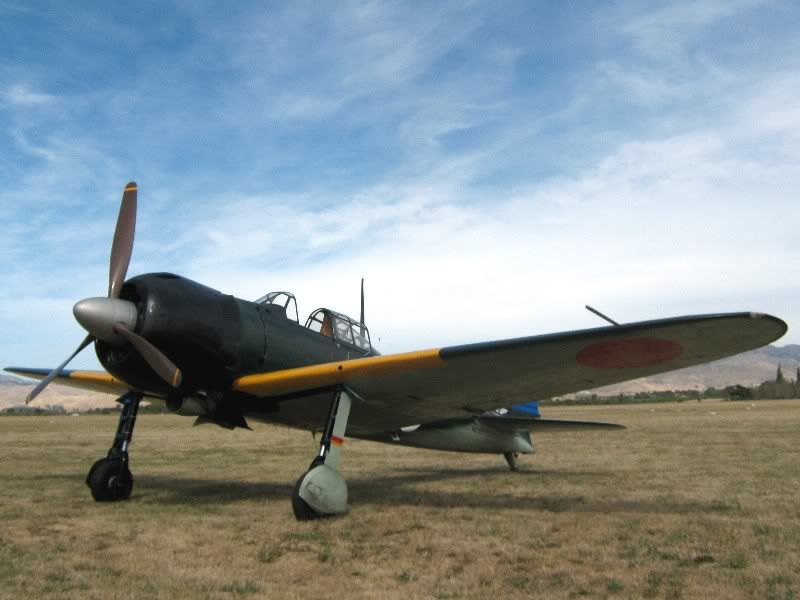 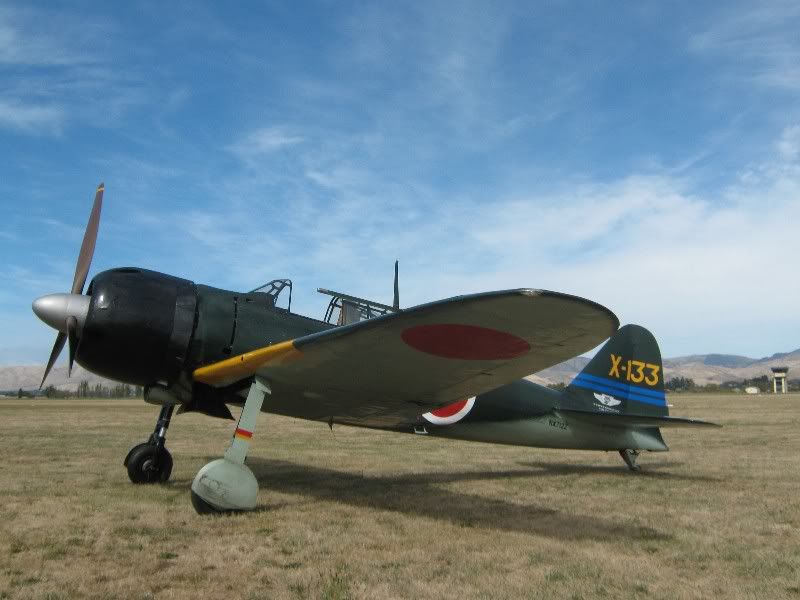  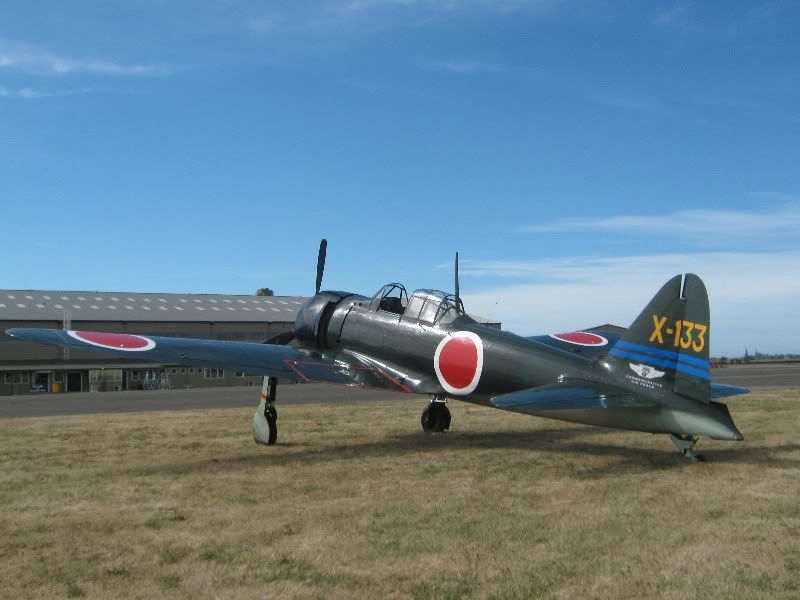 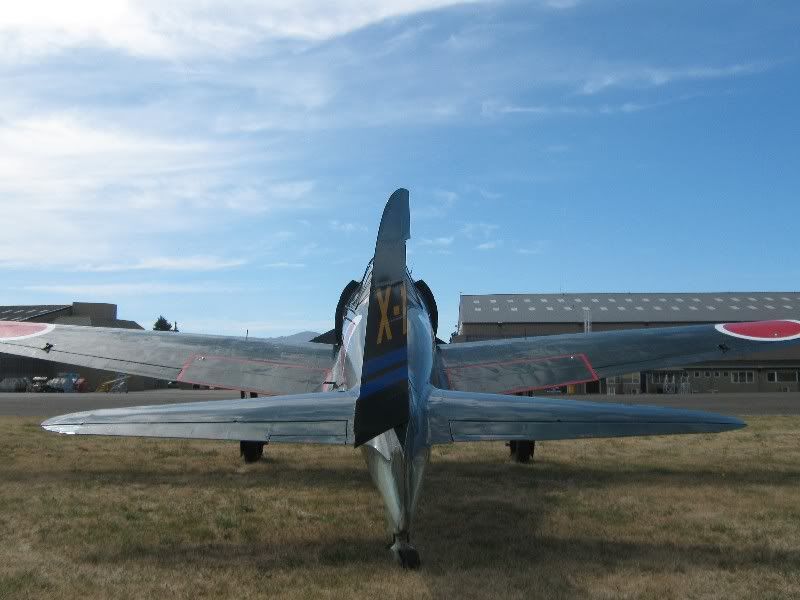 Inside the cockpit from left to right 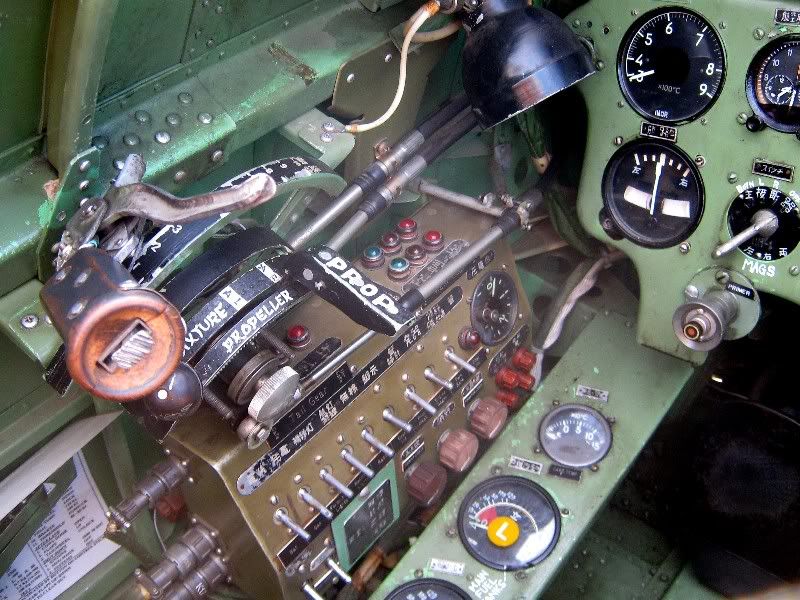 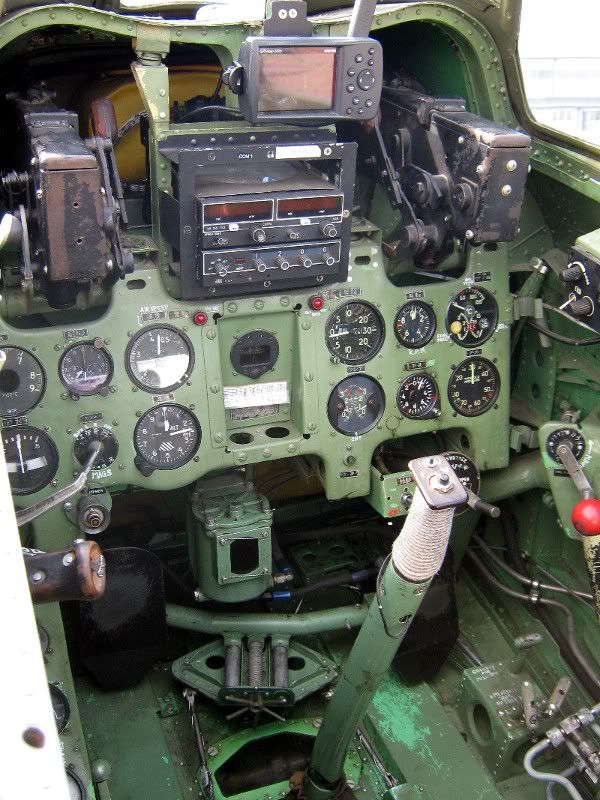 ASI indicated in Knots IAS. Redline at exactly 300 kts, green range ends at 270. Pilot explained that he doubts the aircraft could actually reach that speed; he'd pushed it to just over 200 and found that controls became real stiff due to them being fabric covered. Could out manoeuvre anything except the F8F (Bearcat), which I presume he's also flown. Guns in the cockpit are 7.7mm Type 97 machine guns with a single 20mm Type 99 cannon in each wing. 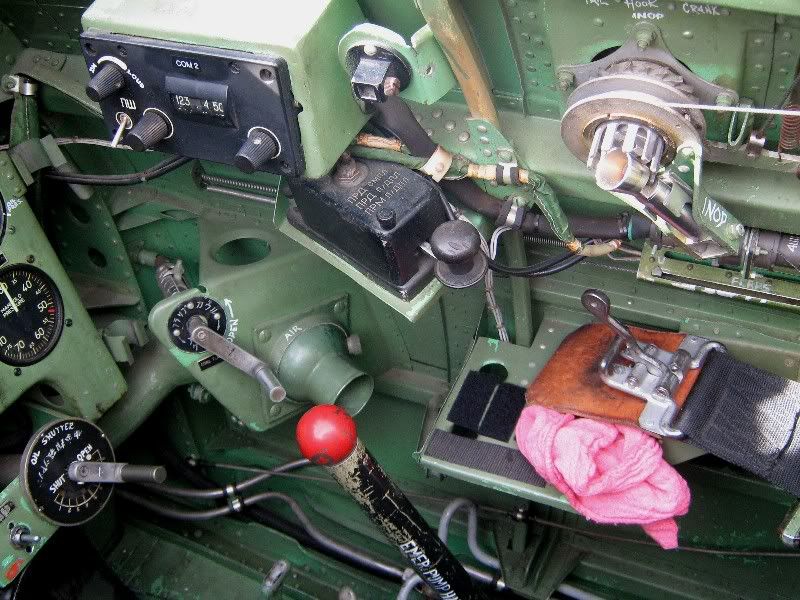 Note the Russian morse key on the right hand side - Cyrillic characters read PRD SMPL, PRD P/DPL, PRM P/DPL - means something to someone. Note also the obligatory rag for wiping oil spat out of the round engine off the fuselage, as the guys were doing when I arrived! 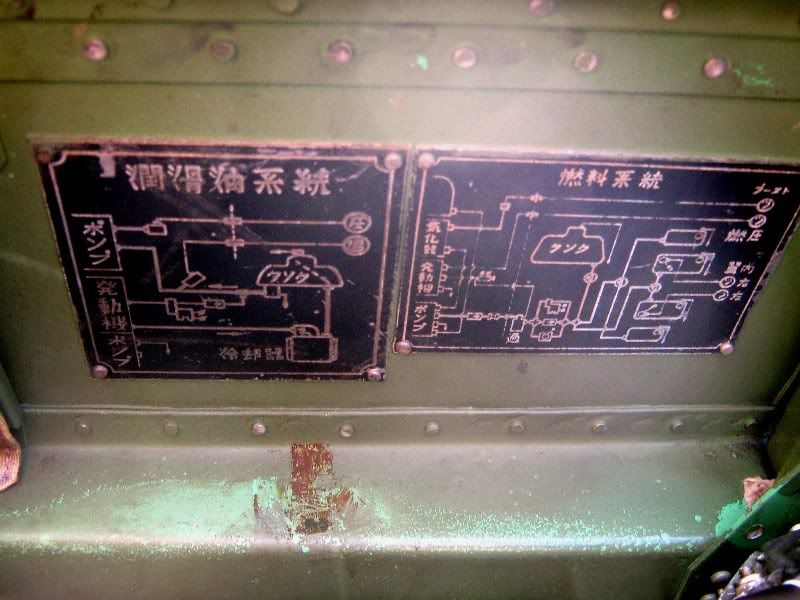 When I first posted this thread I thought this was a wiring diagram - having studied it a bit more, it appears to be a fuel transfer diagram. 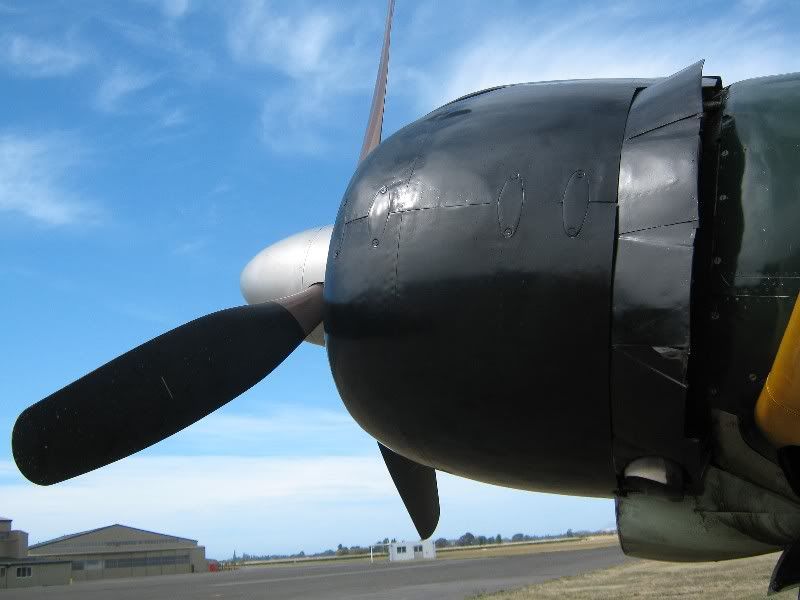 Powered by an 1830 Twin Wasp as in your average DC-3/C-47, I suspect the prop is a Hamilton Standard Hydromatic, but what type I'm uncertain. The DC-3 is fitted with the 23E50. 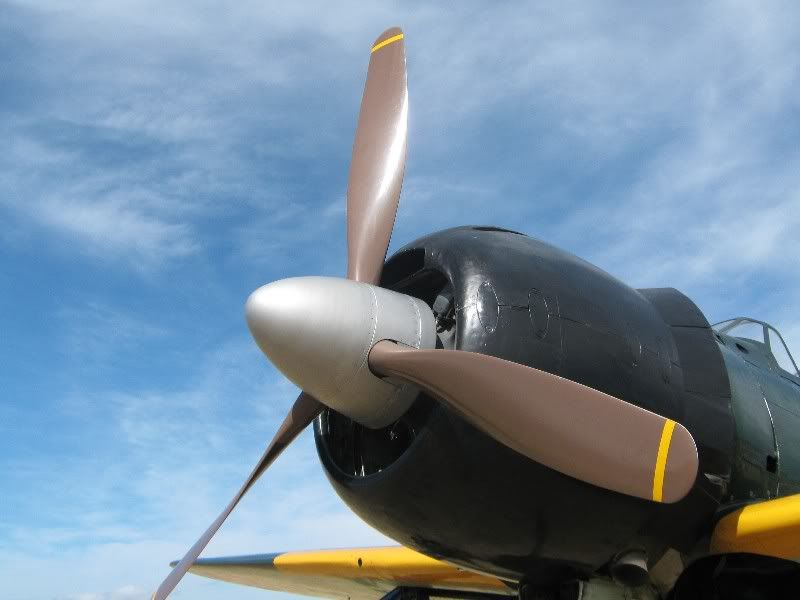 A6M3 nominally powered by a 14 cyl Nakajima NK1F Sakae 21 of 1,130 hp. A6M2 a Nakajima NK1C Sakae of 940 hp. Intake up top of cowl is for two stage supercharger on A6M3 model. 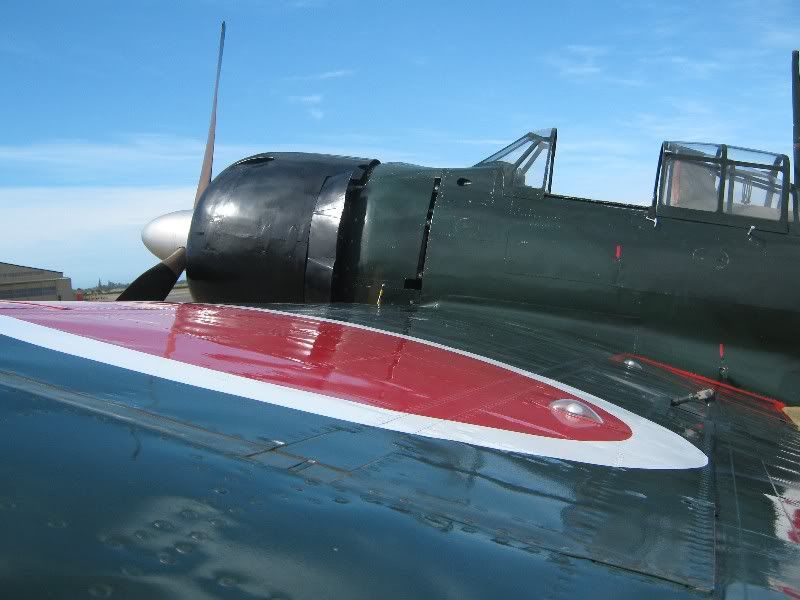 One of the panels enclosing the wing tip hinge points can be seen near the camera. Note the nav light in the meatball.  Right hand wing from the cockpit. The two sets of white writing indicate the refuelling points in the wing. The A6M3 has five; the fifth being ahead of the cockpit. In the A6M3 22 the wings were lengthened over the 32, which had clipped wings. Extra tankage was fitted to the 22 to rectify range deficiency of the 32. Also visible is the undercarriage down indicator on the leading edge. 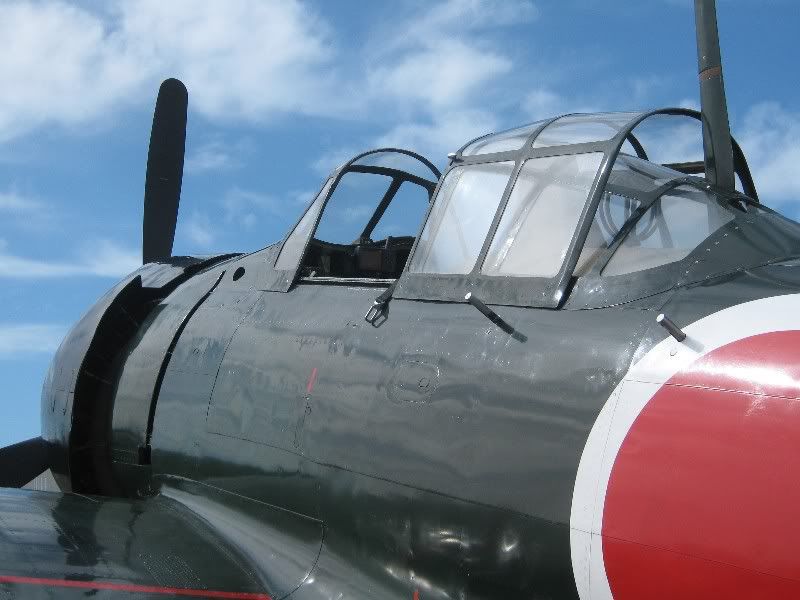 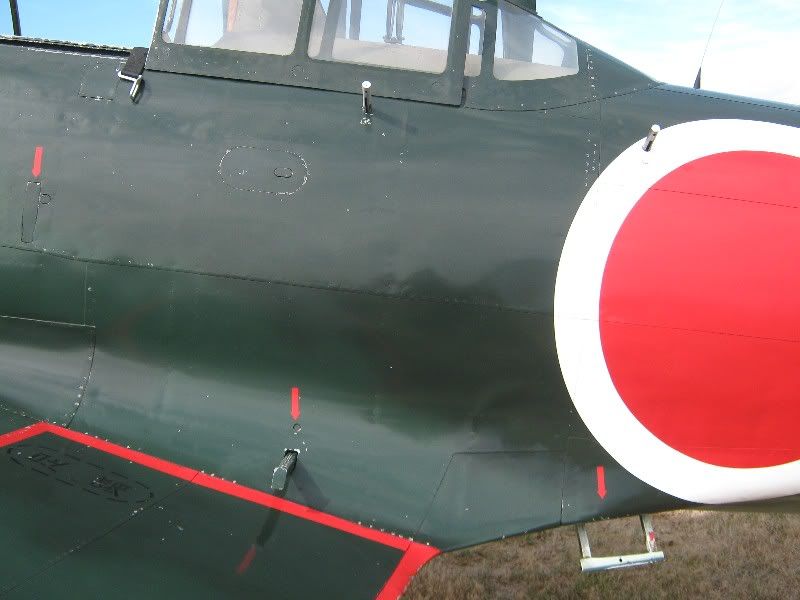 Cockpit entry steps that pop out of the fuselage on opening the vertical lever marked with the red arrow. A very neat installation and avoids standing within the red area marked on the wing above the flap. 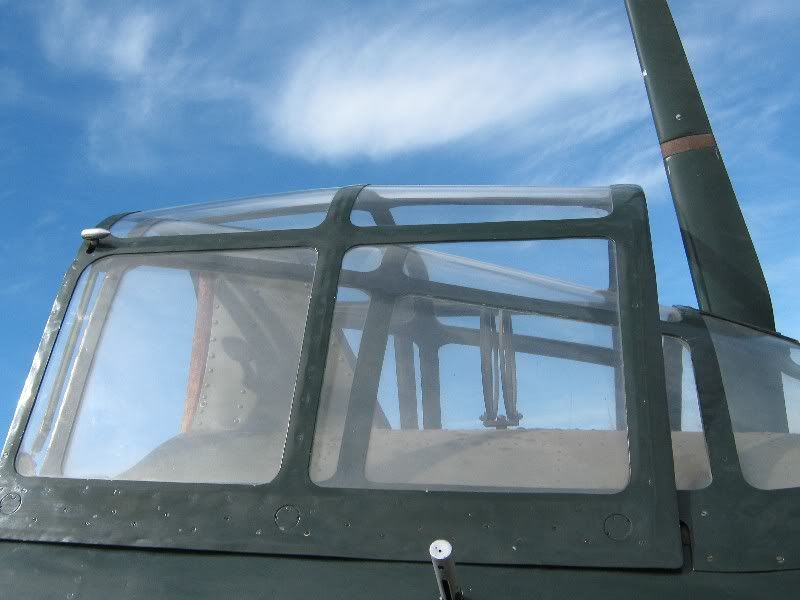 DF loop aerial visible inside canopy; the mast was for a low frequency transmitter for communicationg by morse with the home base. GPS, VHF and transponder not included in WW2 model! 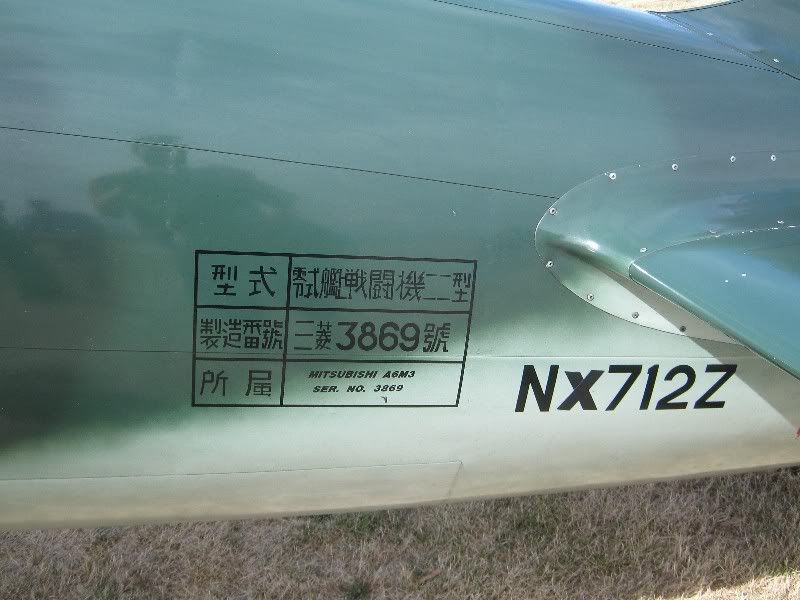 Data plate information painted on the left hand rear fuse and US rego with decidedly temporary 'X'. 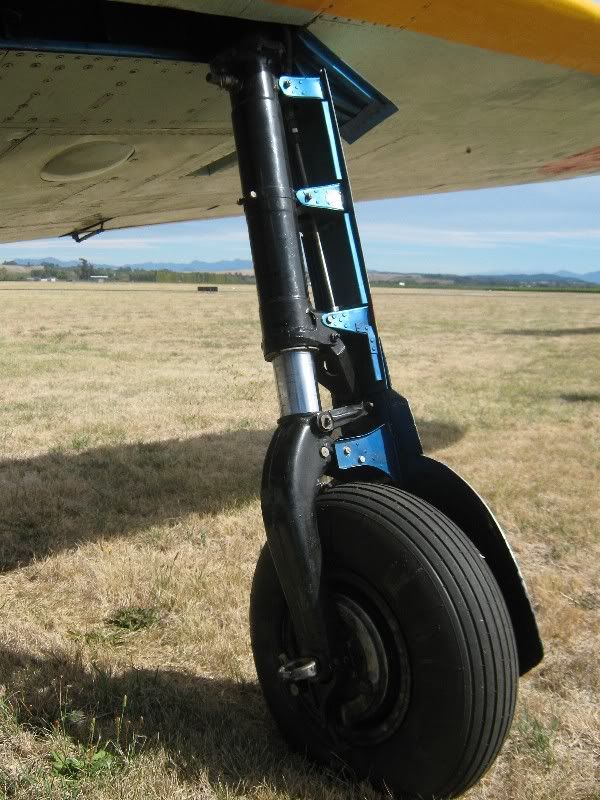 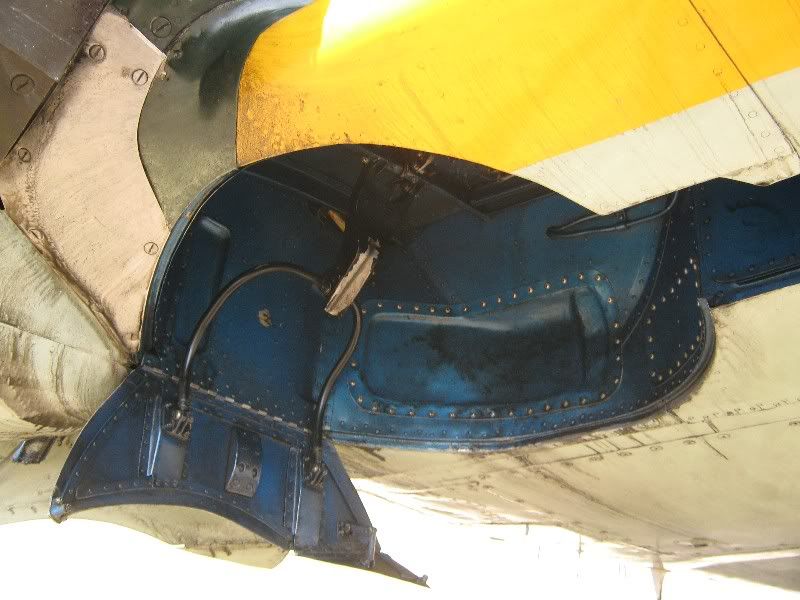  Lastly, the undercarriage. Note the hinged after portion of the crescent wheel well door and its actuation mechanism in black. The tail wheel was solid rubber as was standard on carrier aircraft. 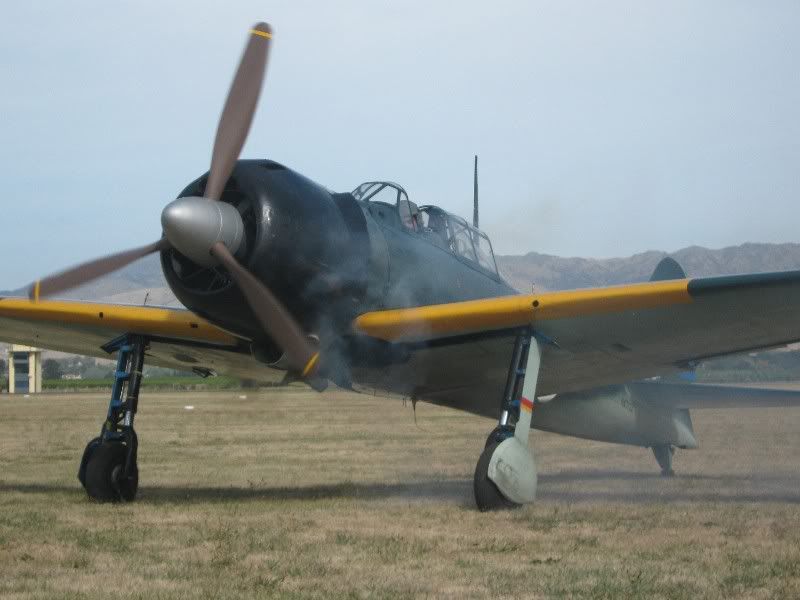  |
|
|
|
Post by nuuumannn on Dec 9, 2011 23:16:36 GMT 12
I've made changes to the imagery on this thread, which I started last year. Enjoy.
|
|
|
|
Post by flyjoe180 on Dec 20, 2011 9:33:30 GMT 12
Great pics Nuuumannn, cheers for those. A very interesting aeroplane up close, the landing gear is quite complex looking with all those scissor links. The solid rubber tail wheel tyre is also an interesting item. I hope that fuel transfer diagram was easier to use when the pilot could read the language. Just a quick question, as the aircraft was recovered initially from Indonesia, would it have been a land-based machine of the Army?
|
|
|
|
Post by nuuumannn on Dec 20, 2011 12:12:58 GMT 12
Hi flyjoe180, A6Ms were never used by the army, only by the IJN, although throughout their island hopping campaigns many were land based.
According to Pacific Wrecks website:
"One of three reproduction Zeros built in Russia between 1994-1997 for the Santa Monica Museum of Flying.
Manufactured with new materials. Assigned the "historical identity" of A6M3 Zero 3869 and the markings and identity of A6M2 Zero Tail X-133. This Zero has folding wing tips of an Model 21 or Model 22 Zero. Although recovered with its original Sakae engine, it was restored with a Pratt & Whitney R-1830 engine.
The restoration was based on wreckage recovered from Babo Airfield by Bruce Fenstermaker. It is claimed that the restoration uses original parts from the wreckage from Babo, including the landing gear legs and stern post."
Info on the original 3869 from the same source:
"Built by Mitsubishi, estimated date of assembly July 1943. Assigned to ? Kokutai.
The horizontal tail stabilizers from this Zero were attached to A6M2 Zero Tail 33 abandoned at Babo Airfield. Remained at Babo Airfield 'in situ' until 1991. Salvaged by Bruce Fenstermaker with A6M2 Zero Tail 33. Containered and shipped to the United States.
An A6M3 Zero 3869 (Reproduction) built in Russia was assigned the identity of this Zero. It is unclear if parts of this real Zero were used in the restoration, or it was simply selected as an identity"
Info on Babo Airfield from same:
"Location
Lat 2° 32' 60S Long 133° 25' 0E Located on the southern shore of Maccluer Gulf at Babo. This strip is located in an isolated low-lying swamp area.
Construction
Built by the Dutch prewar, it was the final stop for KLM airlines route in Dutch New Guinea. During November 1941, a RAAF engineering party with the assistance of the Dutch upgraded the airstrip for military use.
Wartime Usage by Allies
Attacked by Japanese H6K Emily flying boats on December 30, 1941, leaving three dead and 14 wounded, including a number of children. Three RAAF 13th Squadron Hudson bombers were sent there to act as 'fighters', this temporary duty was regarded to be against enemy flying boats while the Dutch KNIL garrison of approximately 200 rushed to improve area defenses and create a clearing for a second runway.
Allied Units At Babo
(RAAF) 13th Squadron (Hudson x 3) January 1942
Japanese Occupation & Use During WWII
A Japanese Army 2nd Detachment landed at Babo on April 2, 1942 and occupied the town and airfield. Most of the Dutch soldiers escaped to Australia. The airfield was developed into a major base used by both Japanese Army aircraft from the 7th Air Division and land based Navy units as a staging point to southern airfields on Aru and Kai to the south or New Guinea to the east.
The Japanese expanded the airfield, building a second 'hardtop' runway with two strips: 4,530' and 2,660'. Naval troops constructed 15 bomber and 24 fighter revetments with more under construction.
Japanese units based at Babo
202nd Kokutai (formally 3rd Kokutai - Zeros) early 1943 - March 1944 Truk, returns June 44
311th Hikotai of the 153 Kokutai - (A6M3-5 Zeros)
753rd & 732nd Kokutai - Betty (possibly based)
JAAF 7th Air Division
59th Sentai (Ki-43) May 1943
61st Sentai (Ki-49 Helen)
24th Sentai, 1st Chutai (Ki-43-II Oscar) Sumatra May 1943 to Dagua
34th Sentai (Ki-48) 1943
59th Sentai (Ki-43-II Oscar detachment) Malang March 1943 - April 1943 But
70th Dokuritsu Chutai (Ki-46 Dinah)
73rd Dokuritsu Chutai (Ki-51 Sonia)
45th Sentai (Ki-45 Nick) 16 arrive February 19, 1944 to Wakde
75th Sentai (Ki-48 Lily)
25th Special Base Unit (Betty & Topsy Transports)
Japanese & Allied Missions Against Babo
December 30, 1941 - November 5, 1944
Frontline Airfield & Neutralization
During the middle of 1943, the airfield became a regular target for Allied aircraft. By mid-1944, the base was in range of medium bombers and strafers from the 5th Air Force, and came under heavy attack. After the American landing at Biak on May 27, 1944, aircraft from Babo opposed the American landings but suffered heavy losses. The 24th Sentai lost 20 pilots and 40 planes while based at Babo in only 30 days before being withdrawn. The 202nd Kokutai was temporarily withdrawn from Babo for defense of Truk, then returned to Babo in June 1944. They lost 12 planes defending Biak, and were then disbanded.
Tons of American and Australian bombs hit the airfield. Many of its aircraft were destroyed by parafrag bombs. Japanese ground crews even sawed off the engines from wrecked planes, in a desperate attempt to ward off further attacks, and used hulks to fill in bomb craters. The base was neutralized from the air around October 1944. Isolated from resupply or rescue, the remaining Japanese remained at the base until the end of the war."
Post War
The airfield remained relatively undisturbed after the war, with limited flights flying to this remote location. Until the late 1970's many aircraft survived in remarkably intact condition.
So, it seems the aircraft is a repro, but incorporates original components, which may or may not come from s/n 3869.
Hope that answers your question.
|
|
|
|
Post by flyjoe180 on Dec 21, 2011 11:42:28 GMT 12
Thanks for the follow up on my question nuuumannn. I did not know the A6M was only operated by the IJN. Cheers.
|
|
|
|
Post by nuuumannn on Dec 21, 2011 11:58:19 GMT 12
No worries, flyjoe180. The Imperial Japanese Army had the Ki-43 'Oscar' as their main fighter.
|
|
|
|
Post by mumbles on Dec 21, 2011 12:00:08 GMT 12
Thanks for the follow up on my question nuuumannn. I did not know the A6M was only operated by the IJN. Cheers. Just as an aside it seems that most of the IJN flying during the pacific war was from land bases (the big carrier battles aside). I read Saburo Sakai's autobiography recently, and while he was a Naval pilot, he only flew from a carrier a few times, and never fought from one. |
|
|
|
Post by Dave Homewood on Dec 21, 2011 13:21:41 GMT 12
The Royal Navy Fleet Air Arm also operated from many, many land bases too, all over Britain, Africa, the Indian sub-content, the Carribean, and even Australia. Most people don't really think about a naval air force being land based but they were.
|
|
|
|
Post by nuuumannn on Dec 23, 2011 16:10:11 GMT 12
Just as an aside it seems that most of the IJN flying during the pacific war was from land bases (the big carrier battles aside). I read Saburo Sakai's autobiography recently, and while he was a Naval pilot, he only flew from a carrier a few times, and never fought from one. It's a fantastic and revealing little book. Definitely worth reading. |
|
|
|
Post by davidd on Aug 4, 2012 10:35:09 GMT 12
One design feature of the Zero fighter which is almost invariably overlooked is the degree of "washout" built into the outer wing area, which tends to give the impression that the wing (from certain front angles) has an elliptical planform. This actualy shows up well in the second and third pics of this thread, above. ANd knowing what to look for, if you carefully study the first pic you can detect the leading edge "droop" making itself apparent by the sudden "sharpening" of the wing front edge. I call this "droop" because although it is technically washout, this effect is obtained by "bending" the leading edge quite abruptly downwards at an angle, on a line from the leading edge at about half span and back at an angle which projects the line out of the tip at about half chord. So far as I know, few if any scale models of the Zero ever seem to show this dramatic feature, although I suspect that perhaps a few of the larger and more recent kits may have got it right - it is very obvious on the real aircraft when you do a walk-around. This design feature must have knocked quite a few knots off its maximum speed, but this had to be accepted by the Japanese Navy as the cost of obtaining certain other desirable characteristics such as excellent low speed control, and certainly it would have caused the onset of stalling to occur on the inboard wing rather than at the tips!
David D
|
|
|
|
Post by davidd on Aug 4, 2012 10:41:26 GMT 12
Forgot to mention, these are brilliant pictures - well done!! And I cannot help myself - the very last photo in this thread also shows my "droopy" leading edges very well too.
David D
|
|
|
|
Post by davidd on Aug 4, 2012 11:43:26 GMT 12
Just to reassure Board members that the Zero-sen was certainly NOT the only aircraft in history with the wing aerofoil section altered on the outer panels. I mentioned "washout" in my earlier posts; this was something "invented" in WW1 I believe; it was found relatively easy to privide a certain amount of "washout" during the rigging process on biplanes (and non-cantilver monoplanes) to assist in "truing up" the rigging overall, and also to change the flying and handling characterstics by introducing the washout to give higher flying speeds, or better and more predictable handling at lower airspeeds. By the time the fully cantilever monoplane came along, it was often the case that washout was built in on the jigs; one only has to briefly study the Harvard wing to get confirmation of this (I was amazed at the extent of this when I first thought to look!) And do not forget the humble strut-braced monoplane, which uses an adjustable strut-end (with lock-nut!) on each side to get the correct washout angle "as specified by the maker". I also remember being impressed by the number of well-known aeronautical design engineer's "tricks" built into the outer wing panels of the Beagle Pup (changed aerofoil section, spoilers, etc) although these probably differed little from those on Chipmunks, etc.)
David D
|
|



















































